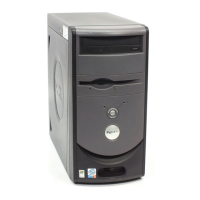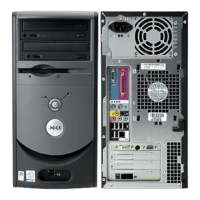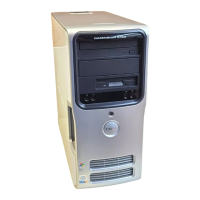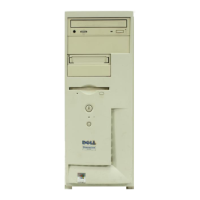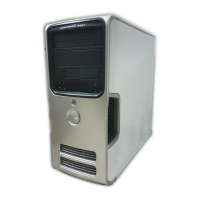42 Optimizing Performance
Using the Intel
®
Application Accelerator
If you already have one hard drive with the operating system installed on it, and you want to add a second
hard drive then reconfigure both drives into a RAID volume without losing the existing operating system
or data, use the migrating option (see "Migrating to a RAID Level 0 Configuration" on page 44 or
"Migrating to a RAID Level 1 Configuration" on page 44). Create a RAID level 0 volume or RAID level 1
volume only when:
• You are adding two new drives to an existing single-drive computer (with the operating system installed
on the single drive), and you want to configure the two new drives into a RAID volume.
• You already have a two-hard drive computer configured into a volume, but you still have some space
left on the volume that you want to designate as a second RAID volume.
Creating a RAID Level 0 Configuration
NOTICE: The following procedure will result in the loss of all data on the hard drives in your RAID configuration.
Back up any data you want to keep before continuing.
1
Set your computer to RAID-enabled mode (see "Setting Your Computer to RAID-Enabled Mode" on
page 39).
2
Click
Start
and point to
Programs
→
Intel(R)
Application Accelerator
→
Intel Matrix Storage
Manager
to launch the Intel
®
Storage Utility.
NOTE: If you do not see an Actions menu option, you have not yet set your computer to RAID-enabled mode
(see "Setting Your Computer to RAID-Enabled Mode" on page 39).
3
On the
Actions
menu, select
Create RAID Volume
to launch the Create RAID Volume Wizard, then
click
Next
.
4
On the
Select Volume Location
screen, click the first hard drive you want to include in your RAID
level 0 volume, then click the right arrow.
5
Click to add a second hard drive, then click
Next
.
To add a third hard drive in your RAID level 0 volume, click the right arrow and click on the third drive
until three drives appear in the
Selected
window, and then click
Next
.
6
In the
Specify Volume Size
window, click the
Volume Size
desired, then click
Next
.
7
Click
Finish
to create the volume, or click
Back
to make changes.
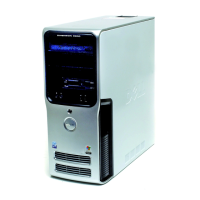
